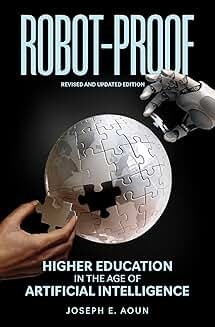Dear Commons Community,
I read the book, Christianity: An Ancient Egyptian Religion by Ahmed Osman over the summer but was tardy in posting about it on this blog. It is a provocative book first published in 1998, that argues that many foundational elements of Christianity are deeply rooted in ancient Egyptian religious traditions rather than exclusively emerging from Judaea. Osman draws comparisons between Old Testament narratives and Egyptian history, suggesting that prominent biblical figures like Moses and Joshua correspond to Egyptian historical personas. He further claims that key Christian doctrines—including monotheism, the Trinity, the virgin birth, and concepts of life after death—are Egyptian in origin.
The book also contends that early Christianity functioned as an Egyptian mystery religion until its suppression by Roman authorities in the 4th century. Osman highlights how the Roman destruction of the Alexandrian library in 391 AD erased much evidence of Christianity’s Egyptian foundations, as part of the Roman effort to recast Christianity as a Judaean religion to consolidate political power.
Osman’s work has been criticized by some and praised by others. I found some of Osman’s explanations a stretch.
Below is a review by Colin O’Shea that appeared in goodreads and a response from a reader.
Tony
————————————————-
goodreads
Colin O’Shea
Christianity: An Ancient Egyptian Religion by Ahmed Osman Contends that the roots of Christian belief come not from Judaea but from Egypt.
• Shows that the Romans fabricated their own version of Christianity and burned the Alexandrian library as a way of maintaining political power
• Builds on the arguments of the author’s previous books The Hebrew Pharaohs of Egypt, Moses and Akhenaten, and Jesus in the House of the Pharaohs
In An Ancient Egyptian Religion author Ahmed Osman contends that the roots of Christian belief spring not from Judaea but from Egypt. He compares the chronology of the Old Testament and its factual content with ancient Egyptian records to show that the major characters of the Hebrew scriptures–including Solomon, David, Moses, and Joshua–are based on Egyptian historical figures. He further suggests that not only were these personalities and the stories associated with them cultivated on the banks of the Nile, but the major tenets of Christian belief–the One God, the Trinity, the hierarchy of heaven, life after death, and the virgin birth–are all Egyptian in origin. He likewise provides a convincing argument that Jesus himself came out of Egypt.
With the help of modern archaeological findings, Osman shows that Christianity survived as an Egyptian mystery cult until the fourth century A.D., when the Romans embarked on a mission of suppression and persecution. In A.D. 391 the Roman-appointed Bishop Theophilus led a mob into the Serapeum quarter of Alexandria and burned the Alexandrian library, destroying all records of the true Egyptian roots of Christianity. The Romans’ version of Christianity, manufactured to maintain political power, claimed that Christianity originated in Judaea. In An Ancient Egyptian Religion Osman restores Egypt to its rightful place in the history of Christianity.
—————————————————————–
Here are comments from one of the readers of the goodreads review.
This book was elucidating on some aspects of the historicity of biblical stories and characters, and offers an engaging well-researched opinion on the significance of the Egyptian Amarna Dynasty and its theological reformation in shaping the early religious beliefs and writings of the Israelites who absconded from Egypt, and subsequently the New Testament Gospels (they being, its claimed, a reiteration of an ancient tradition). This last point undermines the idea of a 1st century historical Jesus figure being responsible for the Christian religion and basically shifts the onus to another time and place entirely, that is Egypt of the fourteenth millennium BC. It also suggests a deep connection between that period’s ruling dynasty and the Isrealites, that ended shortly after the death of Tutankhamun with a military coup and the ascension of a new dynasty, eviscerating the spiritual legacy of the previous dynastic mono-theist “heretics”. I’m fairly obsessed with learning about the roots of Christianity and religion in general, as well as all things ancient Egyptian, and this book didn’t disappoint.
Next on my list in this regard is a book which also pertains to the nonfactual historicity of the Jesus story, and actually provides evidence that the New testament was a codification and reiteration of a Messianic tradition in writing by a Roman elite who wished to quell and satiate a Jewish revolt in the 1st century by proffering them a peaceful “turn the other cheek” type savior, thus saving themselves the hassle of constant uprisings, and providing them with a mechanism of control that ended up being much more powerful than violent force. It’s called “Caesar’s Messiah – Joseph Atwill”. If true, that would have to be an example of the most effective propaganda ever created.
And of course, an historical Jesus isn’t really required for the validity of a positive spiritual message, as Osman’s book also contends; that there is a spiritual aspect of Christ that is distinct from any historical claims to truth, this being the underlying spiritual teaching passed down for centuries before being co-opted (and possibly partly created) by the Roman empire. In this regards, I suggest investigation of the Gnostic christian tradition, which provides a literature apparently untouched by ancient authoritarian influence due to being hidden when the authorities were systematically destroying the physical vestiges of rival ideologies, as all authoritarian states/ideologies have done and do. I’m referring to the Nag Hammadi texts, and the Judeo-Christian Essenes’ Dead Sea Scrolls.






